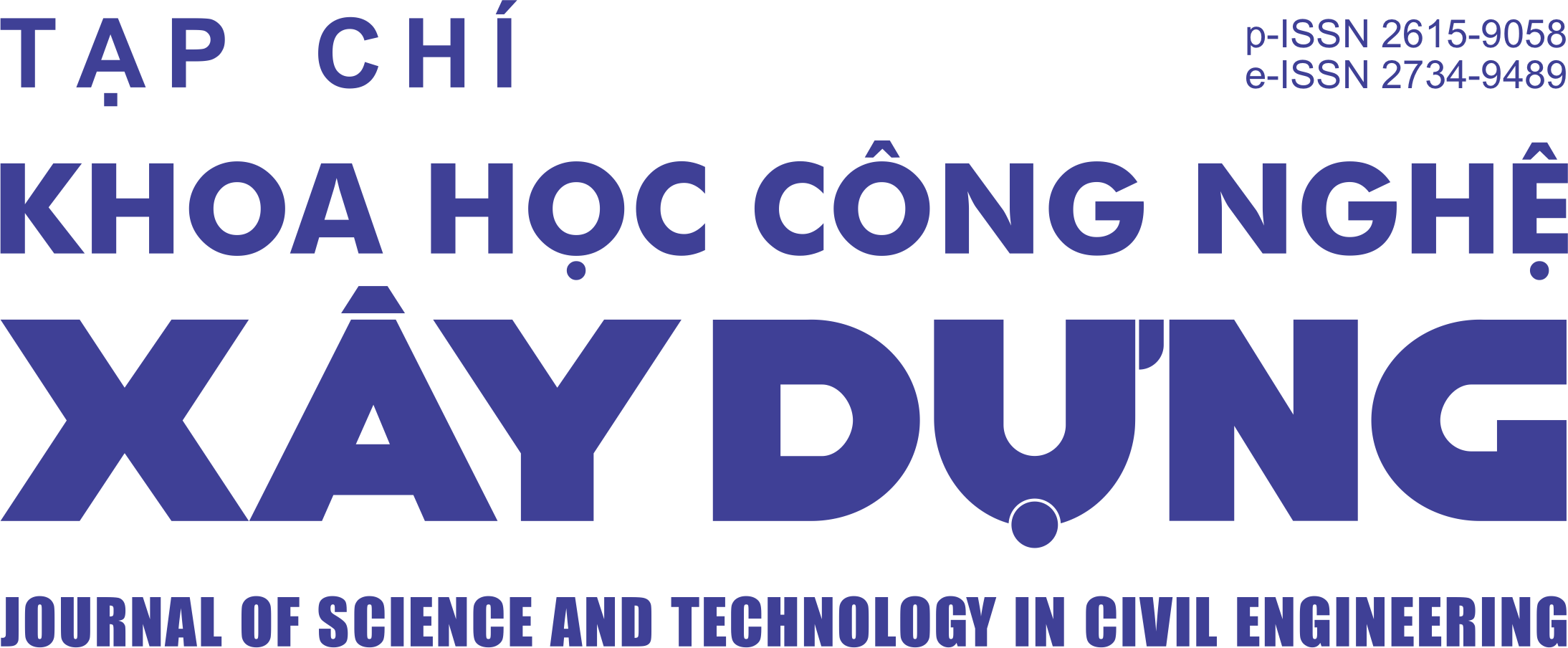Cost optimization in structural design for reinforced concrete frames using Jaya algorithm
Abstract
This study analyzes and optimizes the structural design of three-dimensional (3D) reinforced concrete frame
structures to minimize the amount of two main materials, including concrete and steel reinforcement, used in
reinforced concrete frames. Jaya algorithm was developed based on evolutionary algorithms to build the structural optimization model. The objective function (minimum material cost) with variables being column and
beam cross-sections was set up. In which, the constraints related to the maximum internal force and displacement being in the structural members satisfy limited strength and serviceability requirements. A subroutine written in Python was used to connect the optimization process to the structural analysis software, ETABS. The 3D reinforced concrete frame of a three-story building was selected for cost and design optimization analysis. In which, the optimization problem was solved in cases of three different maximum numbers of iterations, including 20, 35, and 50. In each iteration level, a setting of five independent runs was performed. The subroutine proved to be fast, robust, and convenient manner for solving optimization problems in designing 3D reinforced concrete frames. In which, the best optimal cost might be obtained after twenty iterations and the better convergence behavior occurred at higher numbers of iterations. The study results showed that, for this reinforced concrete frame, applying optimal design led to a materials cost reduction (success rate) by 33.67% compared to that of the conventional design. This success rate would fluctuate according to different nations’ design codes.
Downloads
Copyright (c) 2024 Hanoi University of Civil Engineering

This work is licensed under a Creative Commons Attribution-NonCommercial-NoDerivatives 4.0 International License.
1. The Author assigns all copyright in and to the article (the Work) to the Journal of Science and Technology in Civil Engineering (JSTCE) – Hanoi University of Civil Engineering (HUCE), including the right to publish, republish, transmit, sell and distribute the Work in whole or in part in electronic and print editions of the Journal, in all media of expression now known or later developed.
2. By this assignment of copyright to the JSTCE, reproduction, posting, transmission, distribution or other use of the Work in whole or in part in any medium by the Author requires a full citation to the Journal, suitable in form and content as follows: title of article, authors’ names, journal title, volume, issue, year, copyright owner as specified in the Journal, DOI number. Links to the final article published on the website of the Journal are encouraged.
3. The Author and the company/employer agree that any and all copies of the final published version of the Work or any part thereof distributed or posted by them in print or electronic format as permitted herein will include the notice of copyright as stipulated in the Journal and a full citation to the Journal as published on the website.







